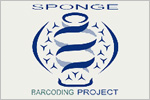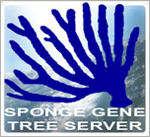Study Trip:
Geobiology und Biodiversity of Recent and Fossil Coral Reefs and Geology of the Sinai
Dahab (Gulf of Aqaba, Red Sea, Egypt)
2004, 2005, 2006, 2007, 2009, 2010
Coral reefs belong to the species-richest habitats on earth but they are under severe threat. The emphasis of this study course is on learning about the geobiology and biodiversity of recent and fossil coral reefs, which are directly and easily accessible along the coastline of the Sinai Pensinsula. The reefs in the Red Sea belong to the healthiest reefs world-wide (result Reef Check). The spectacular recent coral reefs occur in the Gulf of Aqaba mainly as narrow fringing reefs, which make them directly accessible. Outcrops of the similarly spectacular fossil (Pleistocene) reefs are also easily accessible along large parts of the Sinai coast, often only a few meters apart from their recent counterparts, permitting an unprecedented direct comparison of the recent and fossil reef-fauna. The scientific programme of this course involves intensive familiarization with the marine flora and fauna of the recent reefs and a comparison with the fossil reefs. Students will also learn about marine conservation issues and local marine conservation efforts and strategies. Also local geological and socio-cultural aspects are on the program, like a visit to Mount Sinai and St. Katherine's Monestary in the inland of the Sinai, a meeting with the native beduins, and information about the local environmental protection efforts.
The study course will be carried out in close co-operation with the Dahab Marine Research Center (DMRC) in Dahab. The DMRC enjoys the full support of the Egyptian authorities and the South Sinai Protectorate within that national park of Egypt. The ultimate goal of the DMRC is the reinforcement and support of research, training and nature protection in the Gulf of Aqaba.
During the first days of the study course an overview about the geobiology and biodiversity of the recent fringing reefs as well as the Pleistocene reefs will be given. Reefs in direct vicinity of the DMRC and Dahab, as well as more distant ones in the southern Ras Muhammed National Park will be visited. In Nabq National Park we look at the northernmost mangroves, in Ras Muhammed National Park, at the southernmost point of the Sinai, we will visit diverse habitats, from recent to fossil (particularly fish-rich coral reefs, expanded lagoons, elevated Pleistocene reefs, mangroves, sabkhas). During further day trips to the hinterland of the Sinai (Mount Sinai, Wadi Gunei), attention will be drawn to local geology as well as to cultural aspects (e.g. St. Katherine’s Monestary). During the last days of the study course, participants will accomplish own small research projects in small's groups (max 4 persons) in Dahab around the DMRC, to familiarize themselves with the biodiversity and geobiology of the recent and fossil reefs (e.g. census of invertebrate diversity on the reef flat, comparing of undisturbed and disturbed sites, comparison of the coral diversity in recent and fossil reefs).
Visit the 2009 course blog!
The study course has been kindly supported over the years by the DAAD, Universitätsbund Göttingen and the Fakultät für Geowissenschaften der Universität Göttingen, and is now supported by the Department of Earth- and Environmental Sciences at the LMU Munich.
Dahab (Gulf of Aqaba, Red Sea, Egypt)
2004, 2005, 2006, 2007, 2009, 2010
Coral reefs belong to the species-richest habitats on earth but they are under severe threat. The emphasis of this study course is on learning about the geobiology and biodiversity of recent and fossil coral reefs, which are directly and easily accessible along the coastline of the Sinai Pensinsula. The reefs in the Red Sea belong to the healthiest reefs world-wide (result Reef Check). The spectacular recent coral reefs occur in the Gulf of Aqaba mainly as narrow fringing reefs, which make them directly accessible. Outcrops of the similarly spectacular fossil (Pleistocene) reefs are also easily accessible along large parts of the Sinai coast, often only a few meters apart from their recent counterparts, permitting an unprecedented direct comparison of the recent and fossil reef-fauna. The scientific programme of this course involves intensive familiarization with the marine flora and fauna of the recent reefs and a comparison with the fossil reefs. Students will also learn about marine conservation issues and local marine conservation efforts and strategies. Also local geological and socio-cultural aspects are on the program, like a visit to Mount Sinai and St. Katherine's Monestary in the inland of the Sinai, a meeting with the native beduins, and information about the local environmental protection efforts.
The study course will be carried out in close co-operation with the Dahab Marine Research Center (DMRC) in Dahab. The DMRC enjoys the full support of the Egyptian authorities and the South Sinai Protectorate within that national park of Egypt. The ultimate goal of the DMRC is the reinforcement and support of research, training and nature protection in the Gulf of Aqaba.
During the first days of the study course an overview about the geobiology and biodiversity of the recent fringing reefs as well as the Pleistocene reefs will be given. Reefs in direct vicinity of the DMRC and Dahab, as well as more distant ones in the southern Ras Muhammed National Park will be visited. In Nabq National Park we look at the northernmost mangroves, in Ras Muhammed National Park, at the southernmost point of the Sinai, we will visit diverse habitats, from recent to fossil (particularly fish-rich coral reefs, expanded lagoons, elevated Pleistocene reefs, mangroves, sabkhas). During further day trips to the hinterland of the Sinai (Mount Sinai, Wadi Gunei), attention will be drawn to local geology as well as to cultural aspects (e.g. St. Katherine’s Monestary). During the last days of the study course, participants will accomplish own small research projects in small's groups (max 4 persons) in Dahab around the DMRC, to familiarize themselves with the biodiversity and geobiology of the recent and fossil reefs (e.g. census of invertebrate diversity on the reef flat, comparing of undisturbed and disturbed sites, comparison of the coral diversity in recent and fossil reefs).
Visit the 2009 course blog!
The study course has been kindly supported over the years by the DAAD, Universitätsbund Göttingen and the Fakultät für Geowissenschaften der Universität Göttingen, and is now supported by the Department of Earth- and Environmental Sciences at the LMU Munich.

Favourite Links
Projects





